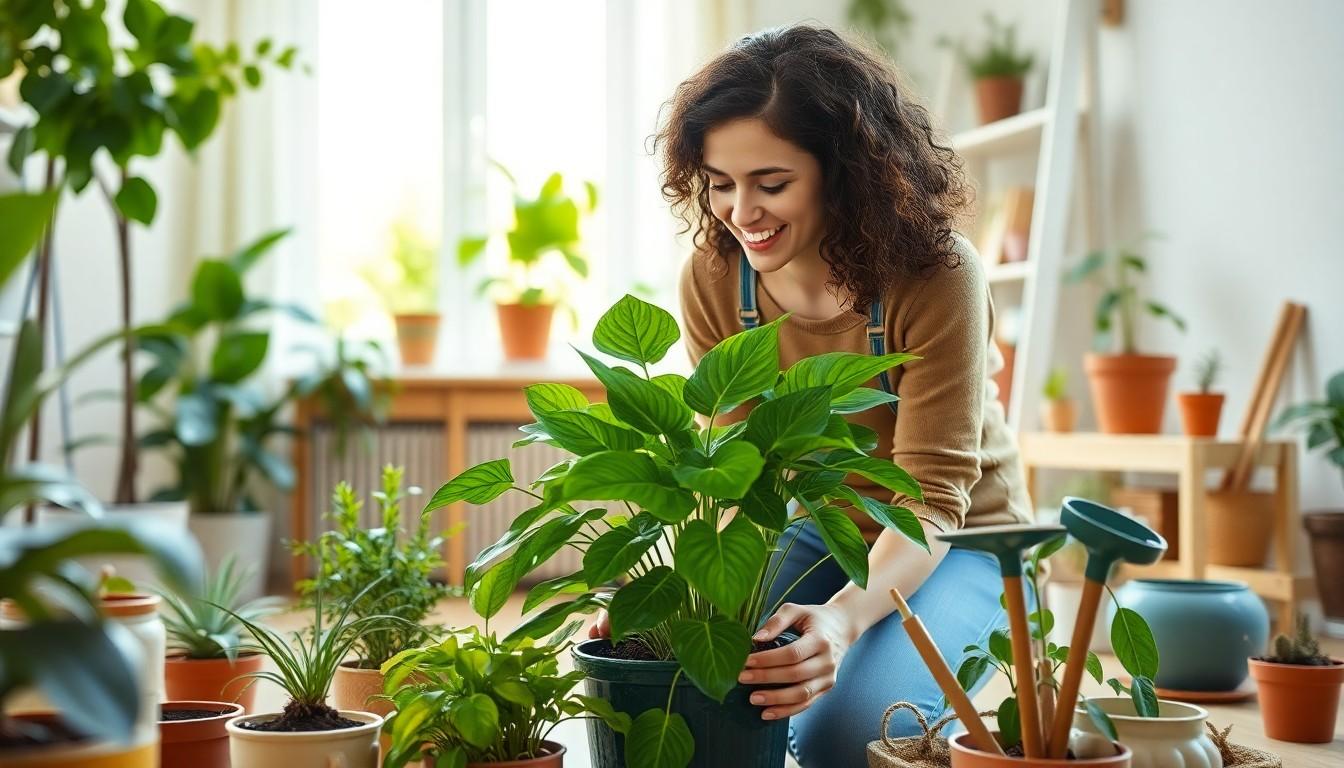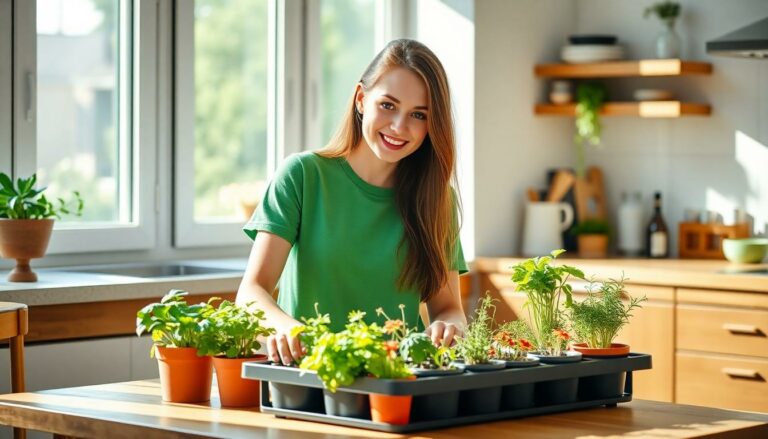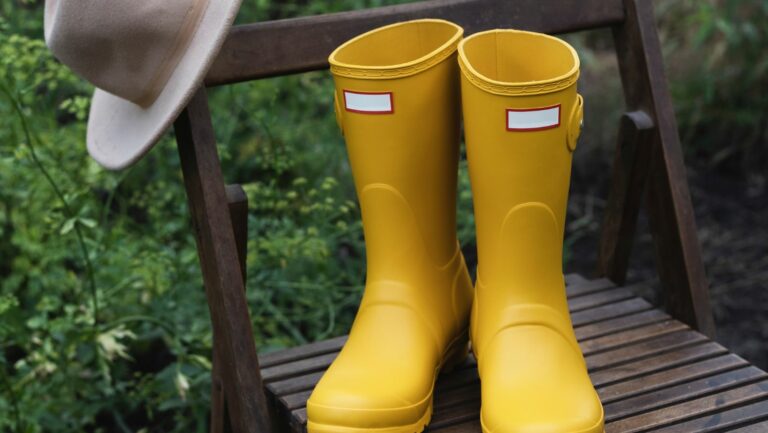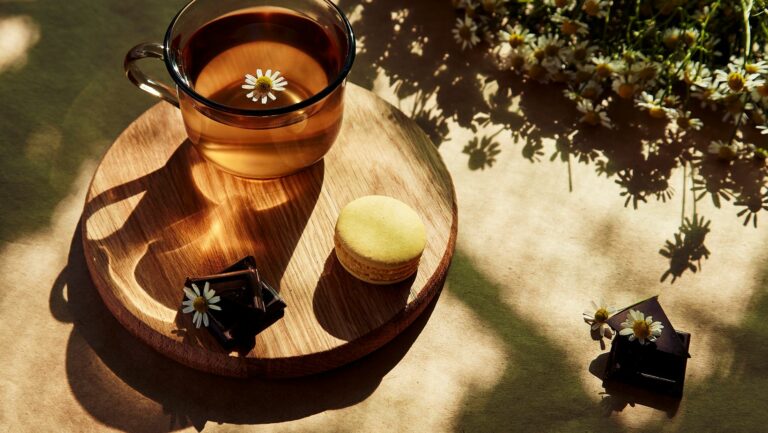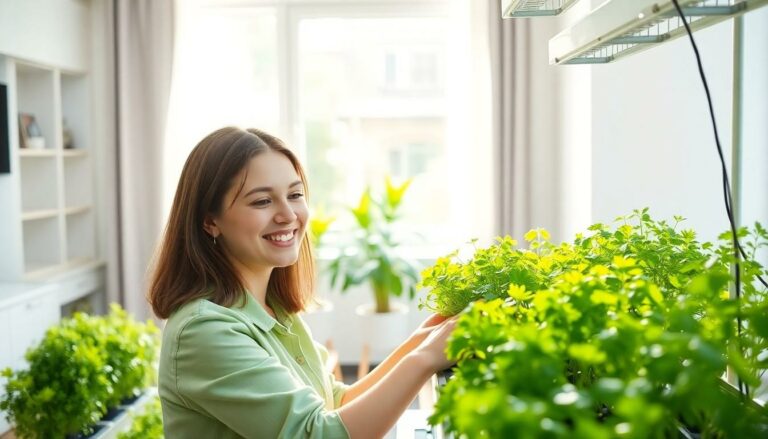Indoor gardening might sound like a trend for hipsters with too much time on their hands, but it’s actually a delightful way to bring a slice of nature into any living space. Imagine transforming that lonely corner of your living room into a lush oasis, where plants thrive and your stress levels plummet. Who needs a therapist when you can talk to your ferns?
Indoor Gardening Tips
Indoor gardening tips play a crucial role in maximizing plant health and growth. These guidelines help individuals select appropriate plants for their secific environments, ensuring optimal growth conditions. Knowledgeable plant selection can lead to lush greenery, enhancing both aesthetics and air quality within spaces.
Proper watering techniques rank among the most vital aspects of successful indoor gardening. Overwatering and underwatering can severely impact plant vitality. Tips such as checking soil moisture levels and understanding plant-specific needs prevent common pitfalls.
Lighting considerations significantly affect indoor plant growth. Indoor gardening tips assist in identifying the best light sources, whether natural or artificial. Some plants thrive in low light, while others need bright, indirect sunlight. Adopting the correct lighting strategy promotes photosynthesis, supporting long-term health.
Fertilization importance cannot be overlooked in indoor gardening. Utilizing the right fertilizers according to plant types boosts nutrient availability. Organic options, in particular, enhance soil health without risking chemical buildup, creating a safe environment for both plants and inhabitants.
Pest management is another critical area addressed by indoor gardening tips. Identifying early signs of pests allows for timely intervention, preventing larger infestations. Numerous natural remedies exist, making it easy to maintain plant health without harsh chemicals.
Lastly, indoor gardening tips emphasize the significance of monitoring humidity levels. Many houseplants prefer specific humidity ranges to thrive. Implementing tools such as humidifiers or pebble trays can create ideal conditions, fostering vibrant and healthy growth.
By following these essential tips, individuals can cultivate thriving indoor gardens that enhance their living spaces while also contributing to their overall well-being.
Essential Tools For Indoor Gardening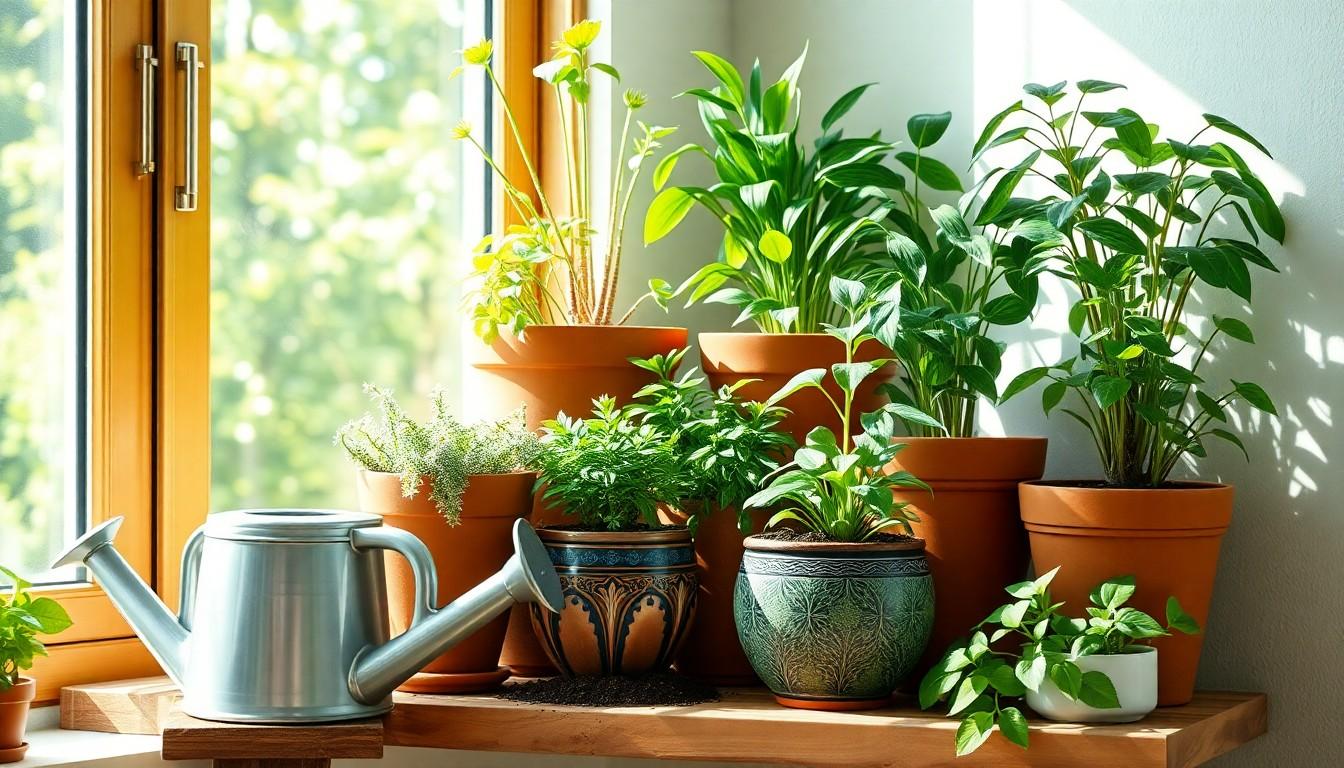
Successful indoor gardening relies on a few essential tools. Having the right equipment facilitates growth and care for plants.
Planters And Pots
Selecting suitable planters and pots promotes healthy roots and drainage. Terracotta and ceramic pots allow for airflow, reducing the risk of root rot. Plastic containers are lightweight and versatile, offering various designs. Ensure that each pot has drainage holes to prevent water accumulation. Consider using self-watering pots for plants that require consistent moisture. Additionally, decorative planters enhance the visual appeal of indoor spaces.
Soil And Fertilizers
Quality soil significantly impacts plant vitality. Choose a well-draining potting mix that contains nutrients essential for growth. Organic fertilizers yield better results by improving soil structure and providing sustained nutrient release. Liquid fertilizers work well for quick nutrient absorption, especially during the growing season. Applying slow-release fertilizers supports plants over time, reducing the frequency of feedings. Regularly check soil pH to maintain optimal conditions for healthy growth.
Choosing The Right Plants
Selecting the right plants enhances indoor gardening success. Consider factors such as light, humidity, and space when making choices.
Low-Light Plants
Low-light plants suit environments with minimal natural light. Snake plants, pothos, and ZZ plants thrive in shadowy corners. Each of these species requires little care and can tolerate neglect. For example, snake plants can survive for weeks without water, making them ideal for beginners. Pothos, with its trailing vines, adds visual interest and warmth. They can grow in various light conditions, from fluorescent bulbs to dim spaces. Additionally, ZZ plants offer glossy leaves and resilience, even in harsh conditions. These options ensure vibrant greenery flourishes in low-light settings.
Aromatic Herbs
Aromatic herbs enhance indoor gardens while providing culinary benefits. Basil, mint, and rosemary are popular choices for home growers. Each herb requires bright light and well-draining soil to thrive. Basil loves warm conditions and can enrich dishes with its fresh flavor. In contrast, mint grows vigorously and can spread quickly if contained properly. Rosemary, with its woody stems, not only adds a delicious aroma to meals but improves air quality as well. Regular harvesting encourages new growth, ensuring a continuous supply of fresh herbs for cooking and garnishing.
Effective Watering Techniques
Effective watering is crucial for maintaining healthy indoor plants. Proper techniques prevent issues related to moisture levels, such as overwatering and underwatering.
Watering Frequency
Watering frequency varies based on plant type, season, and environmental conditions. Lightly moistening the soil is often ideal for most indoor plants. Generally, one should check the top inch of soil for dryness. If it feels dry, it’s time to water. Many plants thrive with watering every 1 to 2 weeks. During winter months, some plants may require less frequent watering. Understanding the specific needs of individual plants enhances their growth and longevity.
Signs Of Overwatering
Identifying signs of overwatering is essential for indoor gardening success. Wilting leaves can be misleading; they may appear droopy even when excess water is present. Yellowing leaves often signal too much moisture in the soil. Additionally, a foul smell from the pot indicates potential root rot. Checking for surface mold can also reveal excessive moisture. Monitoring these signs helps maintain the delicate balance of hydration, ensuring plants thrive in their indoor environment.
Lighting Solutions For Indoor Gardens
Choosing the right lighting is essential for thriving indoor gardens. Different plants require varying amounts of light, making it crucial to assess individual needs.
Natural Light Sources
Natural light from windows serves as an excellent source for indoor plants. South-facing windows provide the most sunlight, while west-facing ones offer moderate light. East-facing windows allow gentle morning light, benefiting more delicate plants. Positioning plants close to these windows ensures they receive adequate light. Gardeners can use sheer curtains to diffuse harsh sunlight, preventing leaf burn. Assessing light intensity throughout the day helps in determining the best spots for each plant.
Artificial Grow Lights
Artificial grow lights effectively supplement or replace natural light. LED grow lights use less energy and emit less heat, making them popular for various plant types. Fluorescent grow lights provide the right spectrum for seedlings and leafy greens. Using full-spectrum grow lights ensures plants receive the necessary wavelengths for photosynthesis. Adjustable height fixtures allow for changes as plants grow, optimizing light exposure. Timing the light duration for 12 to 16 hours daily supports healthy growth and blooming.
Connect with Nature
Indoor gardening offers a rewarding way to connect with nature while enhancing living spaces. By implementing the right tips and techniques, anyone can cultivate a flourishing indoor garden that not only beautifies their home but also promotes mental well-being.
From selecting the ideal plants to understanding their specific needs for light and water, each step contributes to a vibrant indoor oasis. With the right tools and knowledge, maintaining plant health becomes an enjoyable and fulfilling endeavor.
Embracing indoor gardening can transform any environment into a sanctuary of greenery, bringing joy and tranquility into everyday life.
